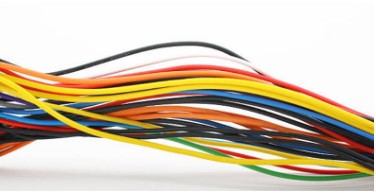Wires have been an integral part of our technological infrastructure for decades, providing the essential means for transmitting information, power, and signals. From telegraph wires to Ethernet cables, wires have played a crucial role in connecting devices, facilitating communication, and powering our digital world. In this blog post, we will delve into the evolution of wired technology, examining its past, discussing its present applications, and exploring the potential future of wire-based connectivity.
1. The Early Days of Wired Communication:
The history of wired technology can be traced back to the early 19th century with the invention of telegraph wires. These wires revolutionized long-distance communication, enabling the transmission of electrical signals across vast distances. Later, telephone wires further expanded the reach of wired communication, connecting people across continents. These early advancements laid the foundation for the wired technologies we rely on today.
2. The Rise of Ethernet and Local Area Networks (LANs):
In the 1970s, Ethernet technology emerged as a standard for local area networks (LANs). Ethernet cables provided reliable and high-speed connections between computers, allowing for the sharing of resources and data within local networks. Ethernet has evolved over the years, with advancements in cable categories (e.g., Cat5, Cat6) and transmission speeds, enabling faster and more efficient data transfer in homes, offices, and data centers.
3. Wires in the Digital Age:
Even in the era of wireless technologies, wires continue to play an essential role in our interconnected world. Ethernet cables are still widely used for stable and secure connections in homes and businesses. Additionally, HDMI cables transmit high-definition audio and video signals between devices such as televisions, gaming consoles, and media players. USB cables are ubiquitous, providing power and data transfer for devices ranging from smartphones to printers.
4. Power Transmission and Charging:
Wires are instrumental in delivering power to our devices. Power cords and cables enable us to charge our smartphones, laptops, and other electronic gadgets. The advent of fast-charging technologies, such as USB Power Delivery (USB-PD) and Qualcomm Quick Charge, has further enhanced the convenience and speed of wired charging, ensuring that our devices are ready for use quickly.
5. High-Speed Data Transfer:
Wired connections continue to be the preferred choice for high-speed data transfer. Fiber optic cables, for example, enable the transmission of vast amounts of data over long distances at incredible speeds. These cables are used in telecommunications, internet backbones, and data centers, supporting the increasing demand for bandwidth-intensive applications like streaming, cloud computing, and virtual reality.
6. Reliability and Security:
Wired connections offer inherent advantages in terms of reliability and security. Unlike wireless signals, wired signals are less susceptible to interference, ensuring consistent and stable connections. Wires also provide a more secure means of data transmission, as they are less vulnerable to unauthorized access or hacking compared to wireless networks, which can be susceptible to eavesdropping or signal interception.
7. The Future of Wired Technology:
While wireless technologies continue to advance, wires will likely maintain their relevance in the future. As data demands increase and technologies like 5G and Internet of Things (IoT) evolve, wired connections will remain crucial for backbone infrastructure and high-speed data transfer. Furthermore, emerging technologies like Power over Ethernet (PoE), which delivers power and data through a single Ethernet cable, and advancements in fiber optic technology hold promise for faster, more efficient, and versatile wired connectivity.
Conclusion:
Wires have been the backbone of our technological progress, enabling communication, power transmission, and data transfer. While wireless technologies have gained prominence, wired connections continue to offer reliability, security, and high-speed capabilities. As we look to the future, wires will likely continue to play a vital role in supporting our increasingly connected and data-driven world, ensuring that we stay reliably linked and powered in the digital age.



